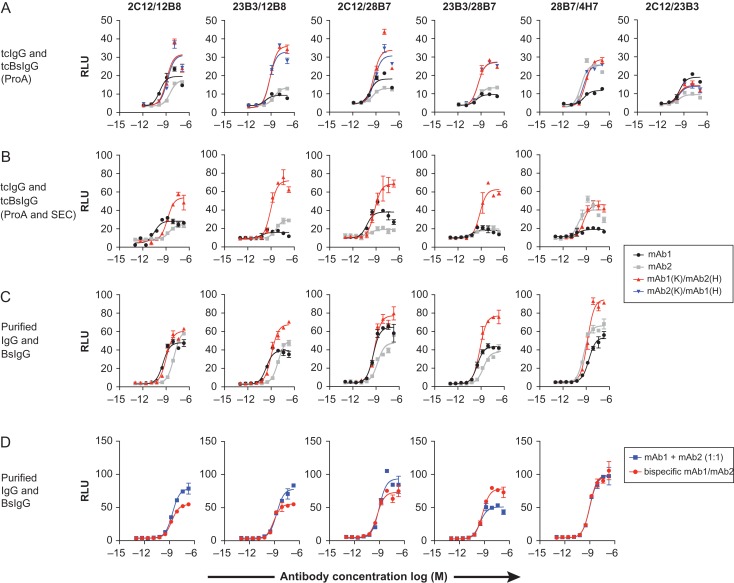Fig. 4.
Identification of bispecific antibodies with higher agonistic activity compared to their parental monoclonal antibodies. (A) Screening of 25 anti-KLB tcBsIgG in the GAL-ELK1 luciferase assay with HEK293T cells expressing FGFR1 and KLB, carried out with protein A purified antibodies. The results of 5 combinations identified to have improved agonistic activity compared to the monospecific parental tcIgG are shown, with 28H7/4H7 having improved activity only at high concentrations. In addition, the results of the 2C12/23B3 combination are shown as a representative example for a pair in which the tcBsIgG did not display improved agonistic activity. (B and C) The five hits from (A) were further validated by tcBsIgG purified by protein A and size-exclusion chromatography to remove potential high molecular weight species (B), or in vitro assembled conventional BsIgG (C). (D) Comparison of the BsIgG with an equimolar mixture of the parental monovalent antibodies. Note that the 23B3/28B7 combination was the only combination that requires an obligate bispecific format. In (A–D), luciferase activity is expressed as relative luminescence units (RLU). The data represents means ± SEM (N = 3).

